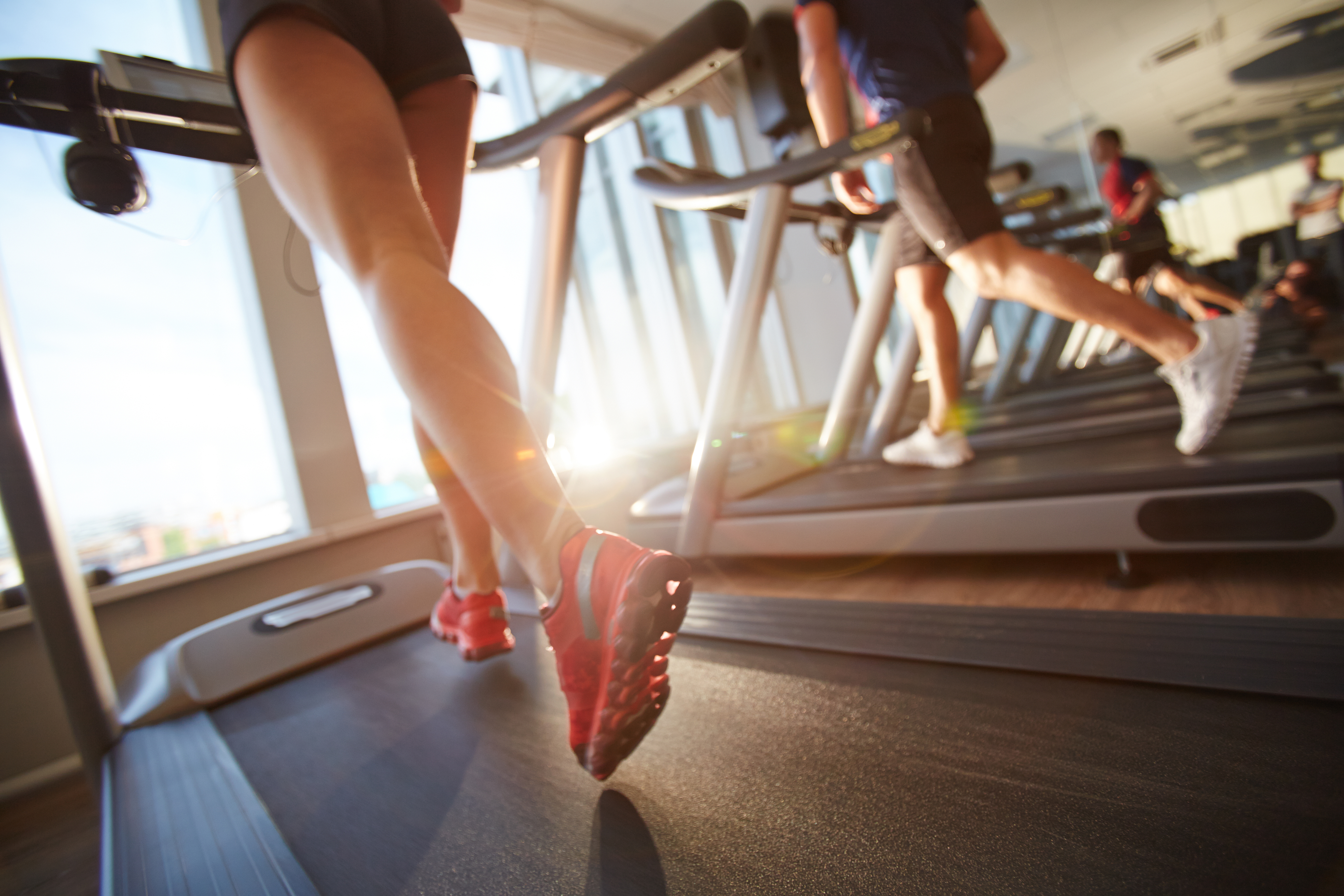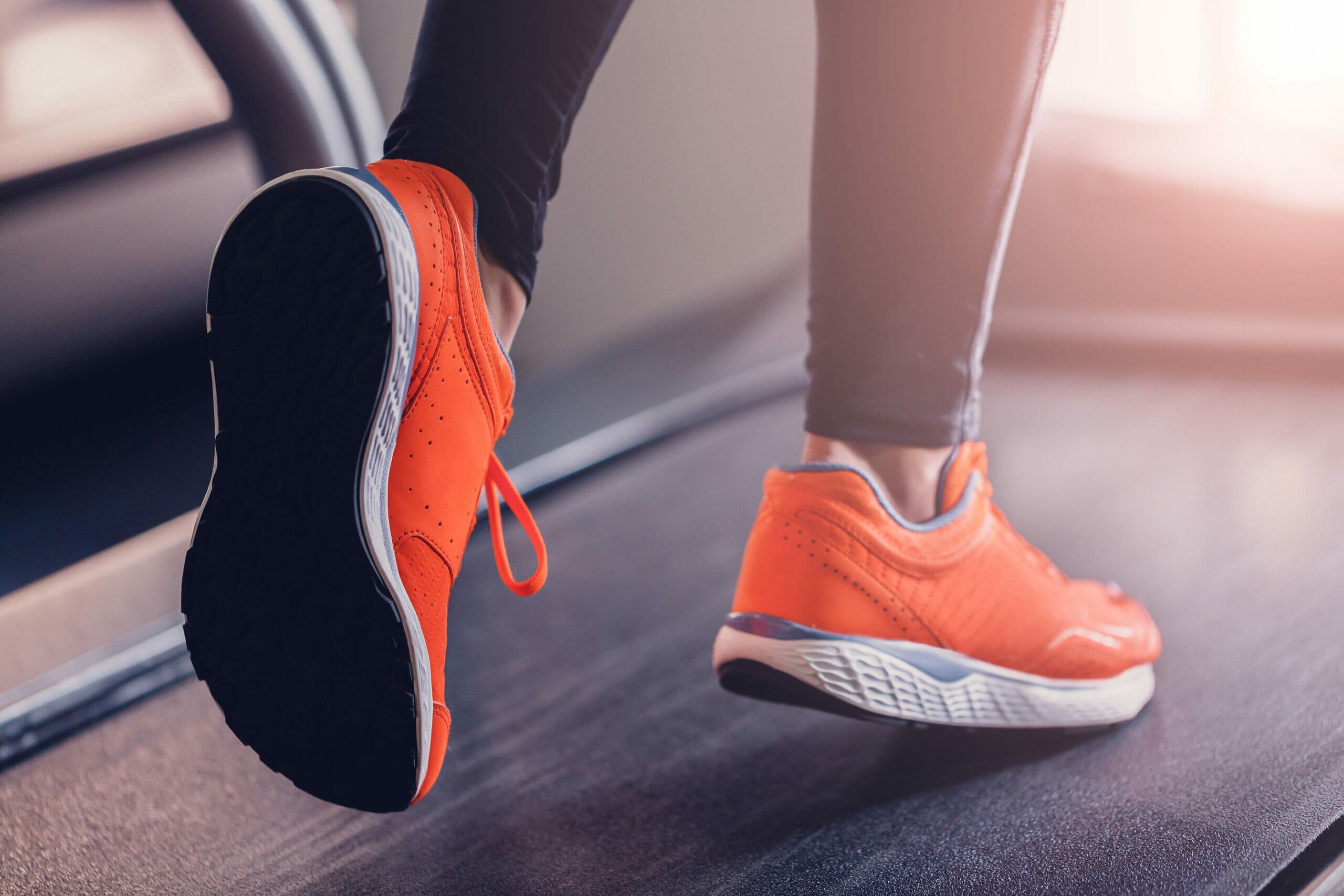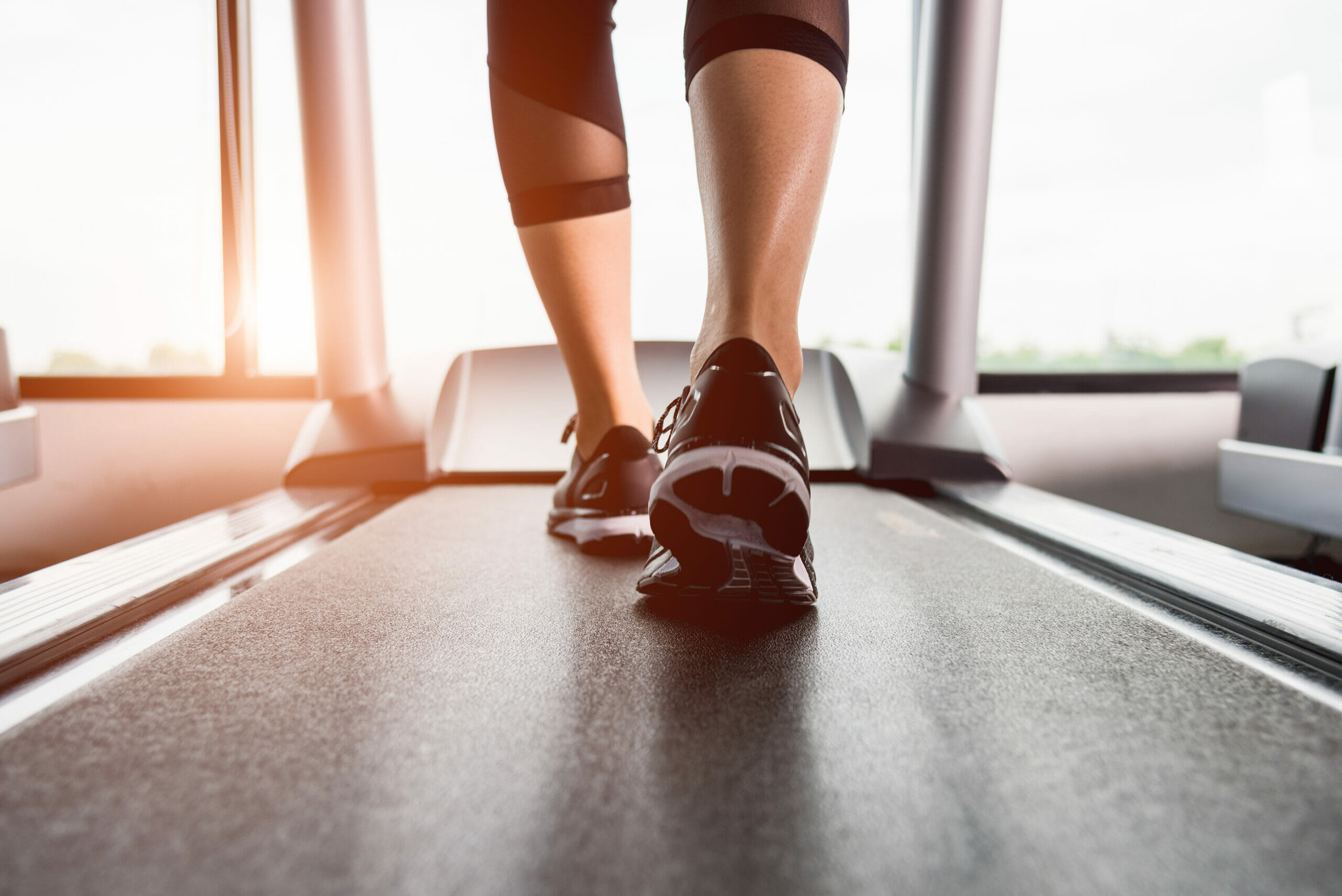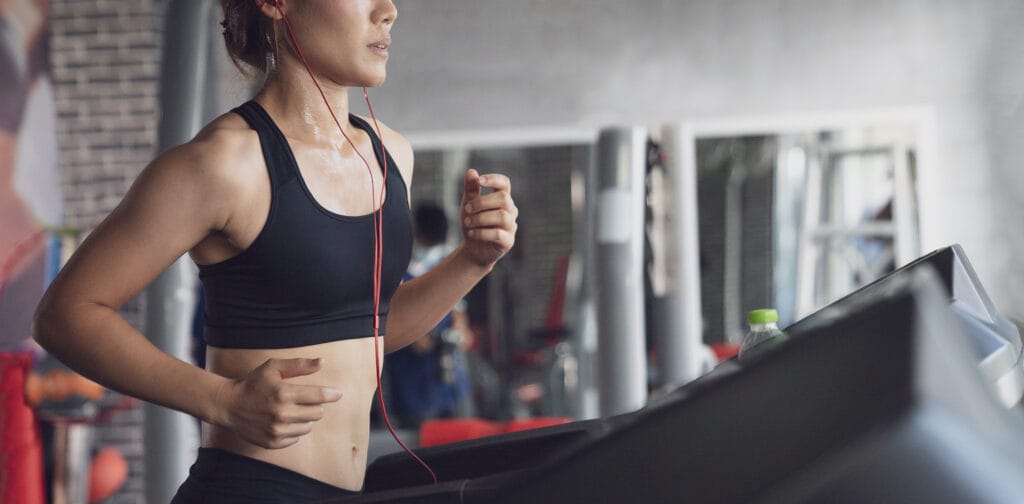
Home treadmills come in a lot of varieties, but one of the first decisions you’ll likely have to make is whether to go with a folding or non-folding model.
If you don’t have a preference (or didn’t know this was an option to begin with), odds are you’ll end up with a folding treadmill, as they have become the norm these days.
But depending on your situation, you may want to think twice before settling for a folding treadmill.
Each design comes with its own set of advantages and drawbacks, but generally speaking, non-folding treadmills offer more stability and durability, where folding options offer the space-saving benefits and are more portable.
Cost may play a factor into your decision making too, as non-folding treadmills tend to cost a little more, but this isn’t always the case.
In this post, we’ll explore the pros and cons of folding and non-folding home treadmills to help you make an informed decision that aligns with your fitness goals and living space.
After reading, you’ll know which kind of treadmill is best suited for your home gym.
Folding treadmills are a great option when space is limited or when working with a smaller budget, but in order to achieve this space-saving feat they have to give up a little in terms of stability. Non-folding treadmills can offer more stability and are often heavier-duty, but they’re harder to move and often cost a bit more.
Folding Treadmills
| Pros | Cons |
| Folds for space-saving storage | Not as stable/durable |
| Easier to move | Have to maintain shocks |
| More affordable | Safety concern with children |
| Easy to clean under | Console doesn’t incline |
The home treadmill has been around for several decades and even though its origins can be traced back to the 1960’s, it wasn’t until the ’70s and ’80s that more compact and user-friendly treadmills started to be developed for home fitness .
The first treadmills were primarily used for medical and scientific purposes, such as stress testing for heart patients (these early versions were large, heavy, and not practical for home use).
Anyway, over the years, advancements in technology and design have made home treadmills more accessible and efficient and the treadmill has become the most popular cardio machine out there.
I don’t know the exact year when folding treadmills first hit the market, but it didn’t take long for them to become the norm.
These days, most home treadmills are of the folding variety, especially when it comes to models under $3k.
Before we go over the pros and cons though, I do want to point out that there are different kinds of folding treadmills.
FOP vs FOB


Most folding treadmills use a fold-on-pin (FOP) design, which allows the deck to fold vertically with a simple hinge.
This is the way the vast majority of folding treadmills operate because its simple, affordable, and effective.
FYI, the same mechanism can also be used to fold the console down to meet the deck, in which case you end up with a treadmill base that can be stored under beds or couches (as is the case with 3G Cardio’s 80i Fold Flat Treadmill).
When comparing FOP treadmills, look to make sure they use a hydraulic assist to make lifting and lowering the deck easier – most now do, but it’s a good idea to double check.
FOP treadmills are fine, but some higher-end folding treadmills, like Matrix, use a fold-on-base (FOB) design.
The FOB design offers more stability and easier folding because instead of simply hinging on a pivot, the end of the deck actually slides along a welded square base.
This mechanism adds more stability to the treadmill, but it also makes the treadmill easier to move once folded because you don’t have to tilt it to roll.
It also allows Matrix treadmills to fold more vertically, reaching almost 90 deg.
If you’re interested in more info, Matrix has a great article describing the differences between FOP and FOB folding treadmills.
Benefits of a Folding Treadmill
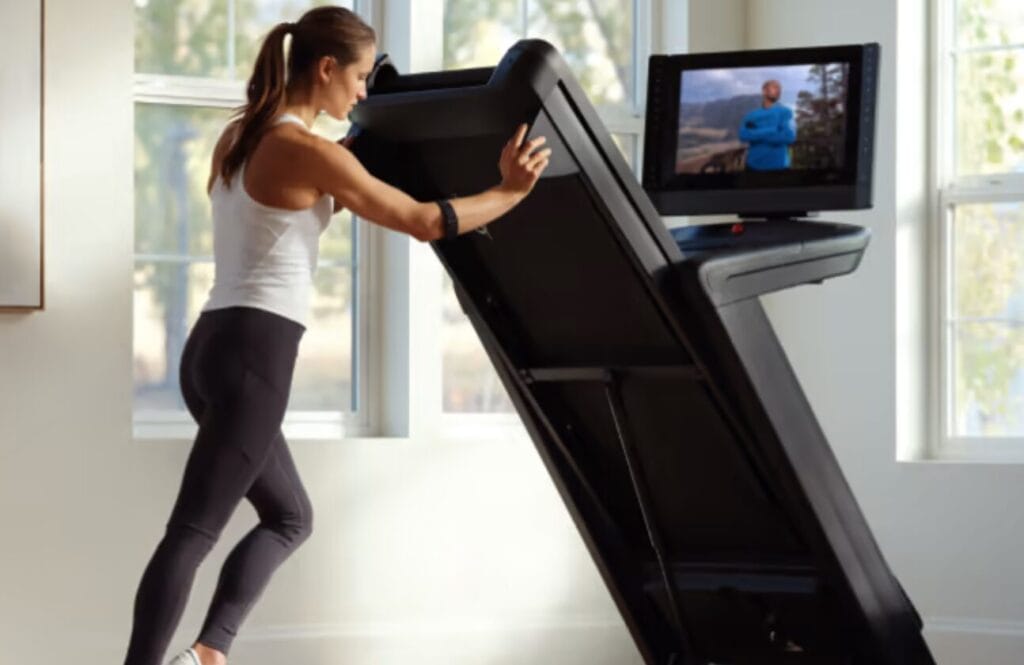
Regardless of how a folding treadmill folds, they all share a few common perks:
Space-saving Design
Folding treadmills are designed to save space, making them ideal for smaller living spaces or apartments.
The amount of floor space you’ll actually save depends on the treadmill’s size and how it folds.
But generally speaking, you typically save about 3′ worth of floor space when the deck is folded up vertically.
In other words, a folded treadmill takes up about half the floor space as an unfolded treadmill.
This might not make a lot of difference for homes with spacious workout areas, but it really could for smaller apartments or homes with shared workout areas.
Portability
Most folding treadmills come with wheels, making them easy to move around.
This feature is beneficial for those who might want to change their workout location or store the treadmill out of sight when not in use.
And even though a folded treadmill can still be bulky, it’s still a lot easier to move around than one that doesn’t fold.
So, if you suspect you’ll have to move your treadmill from time to time, having a folding one is a nice perk.
Oh, and if you like to keep things nice and tidy, having a folding treadmill makes it a lot easier to clean underneath the deck (where dust bunnies like to hide).
Cost
Folding treadmills come in all price ranges and there are certainly high-end, expensive ones as well, but folding treadmills tend to cost less than their non-folding counterparts.
You can find plenty of folding treadmills that cost well-under $1k – the same cannot be said for non-folding models.
So, if you’re looking for a more affordable option, folding is the way to go.
Disadvantages of Folding Treadmills
Folding treadmills are great, but they their drawbacks as well:
Sturdiness Concerns
Folding treadmills may be perceived as less sturdy when compared to non-folding counterparts.
This makes sense considering folding machines are designed for mobility, which inherently means a little less stability.
Some users report that the folding mechanism can contribute to a slightly less stable feel during intense workouts, although a lot of this depends on the quality of the machine.
You’ll likely feel a little more deck wiggling during workouts on a folding treadmill vs a non-folding treadmill.
Hydraulic Shocks
Most folding treadmills, or at least the good ones, have hydraulic shocks to make lifting and lowering the deck easier on ya.
This is great, but it does mean there’s another piece that can malfunction on ya.
You’ll have to keep an eye on its function and if it starts getting stiff, you may have to start lubricating it – not a huge deal, but just a little more maintenance than what’s required with a non-folding treadmill.
Safety Concern with Children
If you have young children, you may have to worry about them playing with the deck release and getting hurt by accidentally lowering the deck.
Keeping young children away from treadmills when unsupervised is a good idea in general, but especially for a folded treadmill.
Console Doesn’t Incline
This one probably won’t be a big deal unless you like to work with really steep inclines, but on a folding treadmill, the console/handlebars don’t elevate when you increase the incline.
On a non-folding treadmill, they do.
This means at steeper slopes, you might find the handles and/or console too low for optimal viewing or grabbing.
Non-Folding Treadmills
| Pros | Cons |
| More sturdy/durable | Takes up more floor space |
| Can handle multiple users | Harder to move |
| Console inclines with deck | More expensive |
Non-folding treadmills are often reserved for commercial gyms, but there are plenty of great options priced effectively for home us as well.
And even though they don’t offer the same space-saving perks that folding models do, they come with their own set of advantages…
Benefits of A Non-Folding Treadmill
Durability and Stability
Non-folding treadmills are often perceived as more durable and stable.
The absence of a folding mechanism contributes to a solid frame, making them suitable for intense workouts and heavy use.
This is why you’ll only find non-folding treadmills in commercial gyms – these machines can handle the additional stress of multiple users on a daily basis.
Non-folding treadmills tend to weigh more too, adding to their overall robustness.
Better for Multiple Users
This point’s along the same line as the first one, but I thought it was important enough to warrant its own distinction.
But the extra heavy-dutiness you get with a non-folding treadmill makes it better suited to handle the stresses of multiple users.
Again, this is why you see only non-folding treadmills in commercial gyms.
Console Moves
And when you incline on a non-folding treadmill, the whole machine moves as a unit, meaning the console and handlebars move as well.
This keeps the console and handles in a more comfortable position when using steeper inclines.
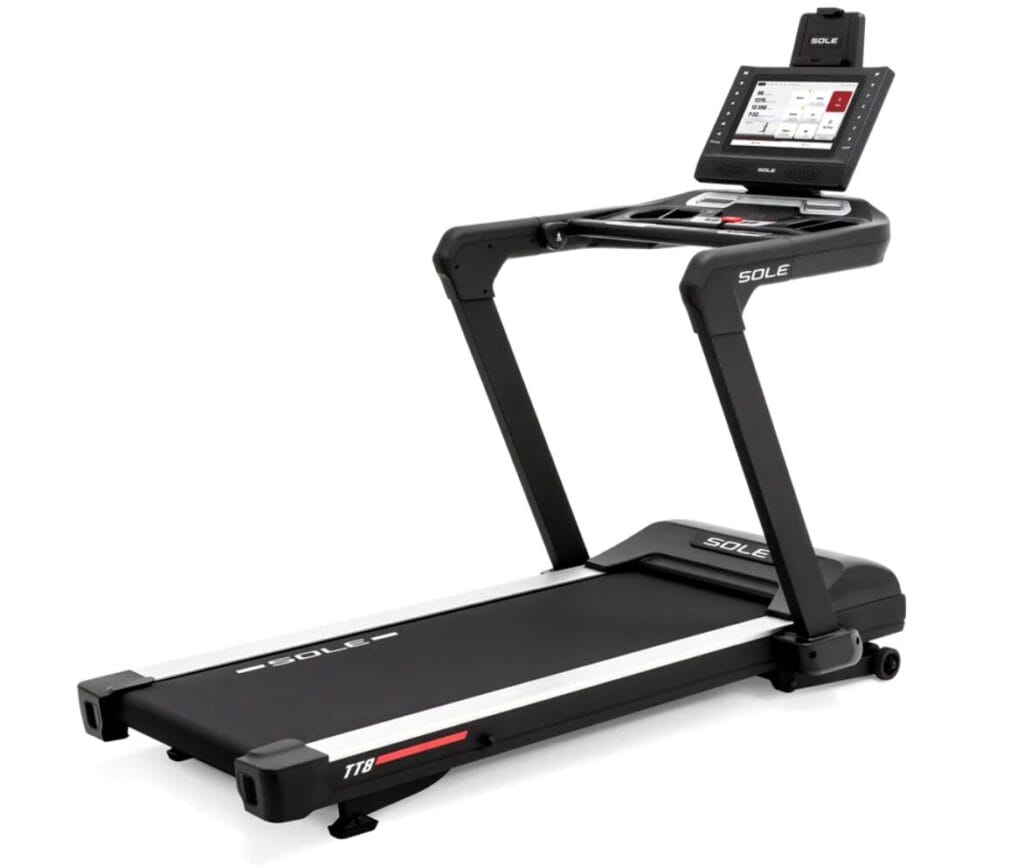
Disadvantages of A Non-Folding Treadmill
Space Requirements
The most obvious disadvantage of a non-folding treadmill is that it doesn’t fold away for storage.
This means these treadmills typically require a dedicated space in your home, where they can be in full view at all times.
If you have limited room, this might be a significant drawback, as they cannot be easily folded and stored away.
Difficult to Move
Due to their bulkier design, non-folding treadmills can be challenging to move around.
Most non-folding treadmills still come with transport wheels, but not being able to fold the deck up makes for a more cumbersome product to move.
And this lack of portability might be a concern for those who prefer flexibility in their workout space.
It could also mean you may have to take a non-folding treadmill apart to move it out of your home, depending on how tight the corners are.
Cost
This rule isn’t written in stone because there are some pricey folding treadmills out there, but for the most part, non-folding treadmills are more expensive.
The extra bulk and stability you get with a non-folding model adds to the expense.
That said, there are some affordable non-folding treadmills out there.
Sole’s TT8, for example, costs under $3k and is so durable it comes with a light-commercial warranty.
That said, most non-folding treadmills start out around $3k and go up from there.
Which Treadmill Is Right For Me?
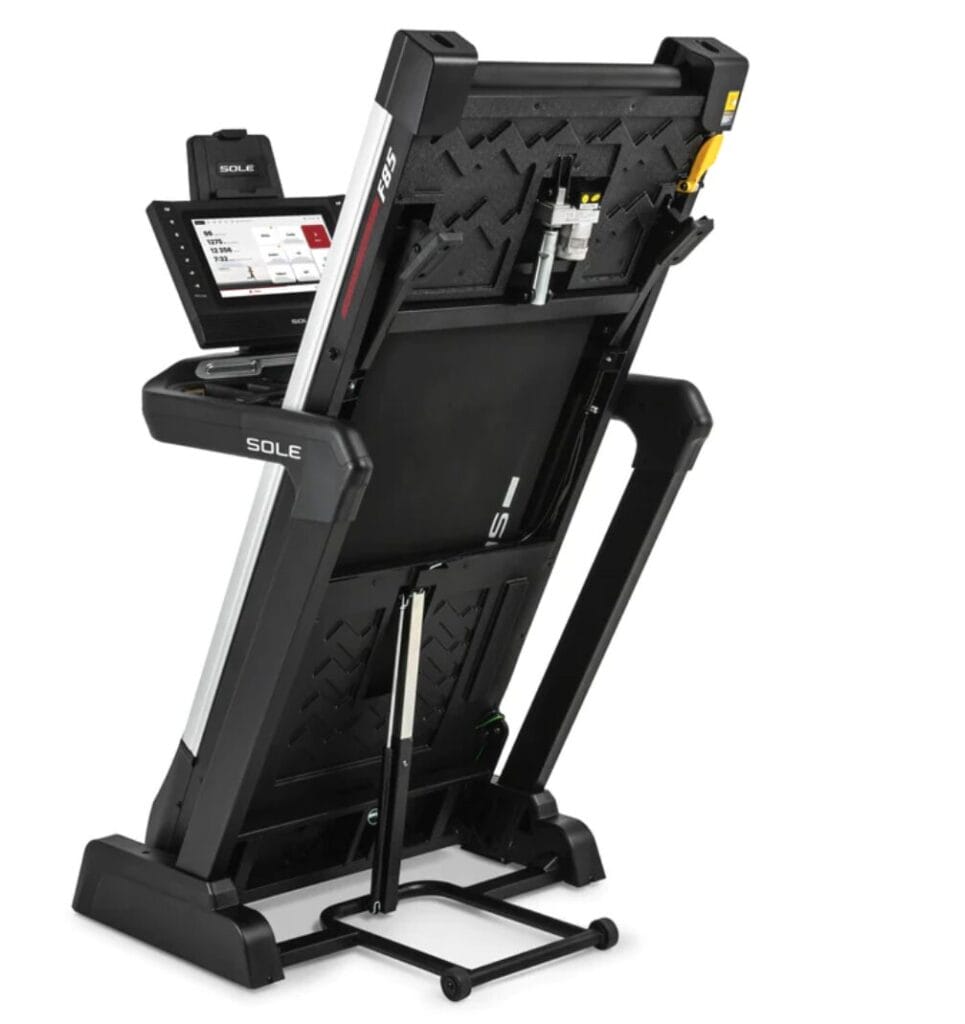
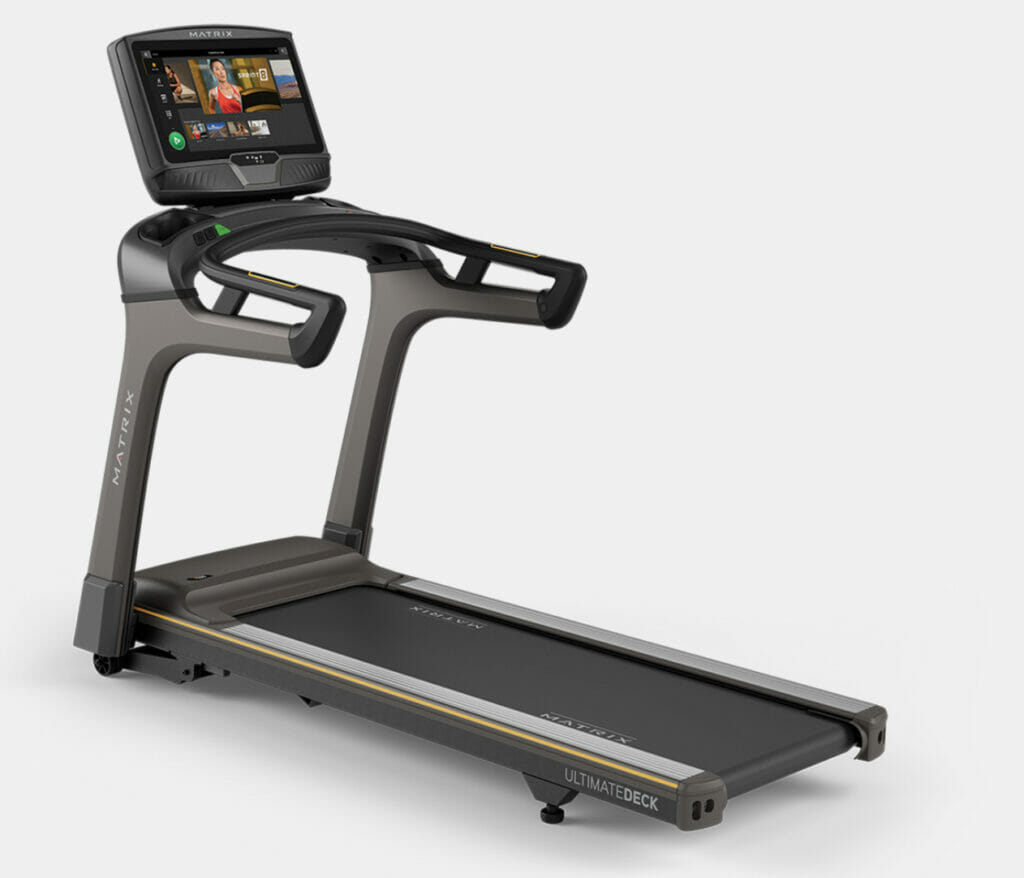
Folding and non-folding treadmills each have their advantages and disadvantages, so it’s hard to definitively say which style is “better”.
It really depends on what your home gym situation is and what you’re looking for.
I know, that’s a bit of cop out, but it’s true.
If you’re still stuck choosing between styles though, maybe this’ll help…
You Should Opt For a Folding Treadmill If:
- Your workout space is limited and/or shared space
- You want to be able to move your treadmill easily
- You’re working with a smaller budget
- Only 1-2 people will be using treadmill regularly
You Should Opt For a Non-Folding Treadmill If:
- You have plenty of workout space
- You’re looking for a more commercial feel
- Multiple users will be using treadmill regularly
- You’re working with a larger budget
Final Thoughts
Choosing between a folding and non-folding treadmill ultimately depends on your specific needs and available space.
If space is a premium and you value convenience, a folding treadmill might be the right choice.
On the other hand, if you prioritize durability, stability, and have the room, a non-folding treadmill may be more suitable.
Consider your home gym setup, workout preferences, and budget to make an informed decision that aligns with your fitness goals.
And when in doubt, feel free to reach out with any questions/comments below and I’ll get back to you shortly.
